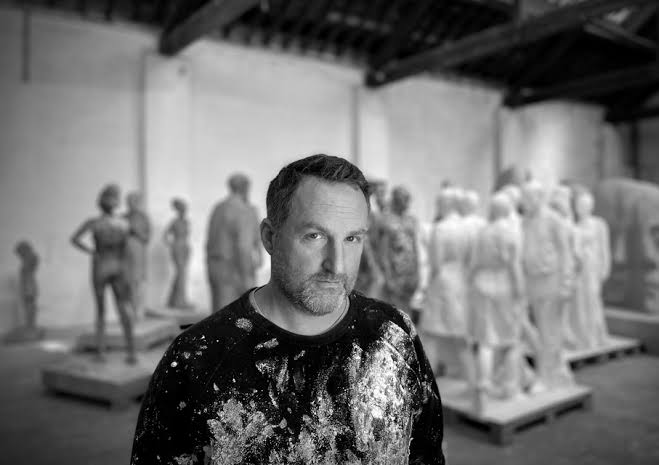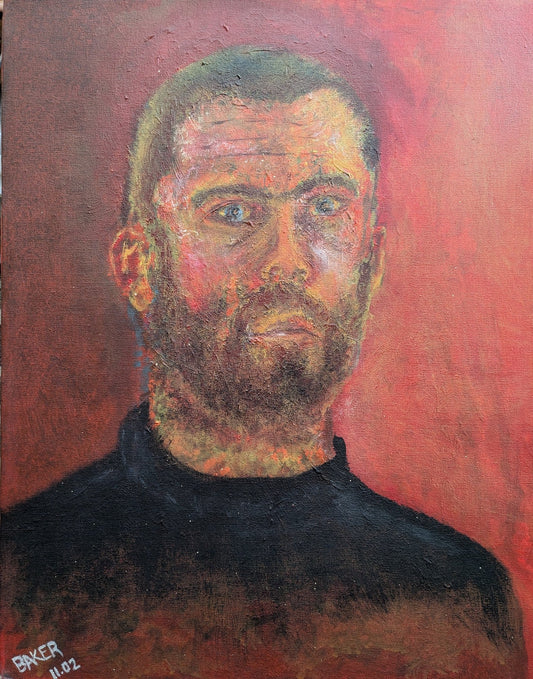Jason deCaires Taylor is a British sculptor who is well known for submerging his sculptures underwater. Taylor received his B.A. in sculpture from the London Institute of Arts in 1998 and has been sculpting for over 25 years, 16 of which include the underwater installations.
Besides being a renowned sculptor, Taylor considers himself an avid explorer who seeks out new adventures, including diving in various bodies of water. Based on his website, he is an Ocean Ambassador to Divers Alert Network ( DAN) and an Ocean Exemplar of the Ocean Observatory. On top of all these recognitions, he was also referred to as the Jacques-Yves Cousteau, a well-known oceanographer of the art world, and was awarded the Foreign Policy Global Thinker Award.

As an avid explorer and traveler, Taylor noticed that the world has been changing and felt that he wanted to find more purpose within his craft of sculpture. He realized he can create artificial reefs that help sustain marine life forms and tell stories about its environment, and most importantly, control tourist interactions. According to Taylor, he wants to showcase to the public how beautiful the marine environment is. He explained how everything underwater is different, such as the way light reflects. He also stated that your mental state is different underwater as well. According to Taylor, when you are underwater, you are more connected to your environment. With such connectedness, the inspiration comes naturally.
In 2006, Taylor gained recognition for his Moilinere Bay Underwater Sculpture Park located in Grenada, a country in the Caribbean. This was Taylor’s first underwater public art space. According to him, ever since university, he’s always aspired to experiment with underwater artworks. Unfortunately, as a student living in London, he lacked the funding he needed to start this project. However, the idea has always been in the back of his mind. 10 years later, while living in the Caribbean, he finally decided to pursue the idea and turn it into reality. He managed to get agreement from the local government and raised funds for his project. Even though Taylor was simply exploring art underwater, he did not expect to make a career out of it. The Moilinere Bay Underwater Sculpture Park is now listed as one of National Geographic’s top 25 Wonders of the World.You can find his work globally in various bodies of water. Even though Taylor is known for his submerged sculptures, he’s also done tidal art, as well as terrestrial art forms that can be found in other countries.


According to Taylor, most of his works are commissions, often from local governments to help boost their tourism and economy. Even though local governments commission his works, he is still required to go through a very lengthy process to obtain a permit before starting the piece. He cannot begin until the permit has been acquired.
Like any other creative artworks, everything starts with an idea. According to Taylor, most of his sculptures are based on the members of the local community to engage people within their own coastlines. By doing this, Taylor wants to remind everyone that we human beings are part of nature as well.
Once an idea has been set, Taylor runs a series of sketches, 3D models, and a program to help predict what the sculpture would look like in a long period of time. Afterwards, they perform site surveys to locate the right location and study the seafloor for attaching installments. Once that has been completed, he begins to consider transportations. When it comes to transporting these sculptures, there are certain factors to consider, such as the weather. According to Taylor, waves and wind conditions can both affect the process negatively. At the same time, these sculptures are not necessarily the lightest to carry. He usually enlarges these sculptures, approximately 20 ft. tall.
Then, the process of construction begins. This can go many ways—large castings, or digital scanning—both require ranges of tools and molds. When building these sculptures, Taylor uses specially designed pH neutral materials that require a lot of testing. He notes that the process of obtaining said materials entails speaking with various marine biologists to ensure that nothing he uses or does contaminates marine life. Lastly, he encourages natural growth on his sculptures. According to Taylor, it only takes a few days to see some growth. Eventually corals begin to grow and a few fish start to move in after.
You can see this phenomenon happen in his work Inertia, located in Cancun, Mexico in The Cancun Underwater Museum of Art (MUSA).. The piece depicts a man sitting on a couch and watching tv—a normal mundane activity, or lack thereof,depending on one’s opinion of television. It’s beautifully ironic, as watching TV intentionally pulls you away from the real world, but the act is taken over by nature. When you watch TV, you get comfortable on your couch and focus your attention on the screen. The act is purely for your own entertainment, to envelop in your own world and cut off the rest. However, in this piece, the man is not cut off. His tv and body slumped on the couch are actively interacting with the ecosystem around them. Coral sprouts from the back of the television, the man’s arms, the couch, and his face. Fish gather around, swarming the man, obscuring his view of the screen.

Even though Taylor based his sculptures on members of the local community, he is also raising issues such as climate change, the changing nature of the sea, and exploring the beauty of the underwater. According to Taylor, “when we destroy our environment, we are ultimately destroying ourselves.” He wants other people to protect and engage with the marine environment.
Currently, Taylor is working on coral propagation in the Caribbean. At the same time, he is also working in the Middle East for solar sculptures to help generate electricity. Looking ahead, he wants to install land and tidal installations in the future. For these tidal regions, when the tide is low,people are encouraged to walk around the shoreline but still help cultivate marine life, similar to The Rising Tides in London.
For more information about Jason deCaires Taylor, follow his Instagram page @jasondecairestaylor or his website at https://www.underwatersculpture.com/.
©ArtRKL™️ LLC 2021-2023. All rights reserved. This material may not be published, broadcast, rewritten or redistributed. ArtRKL™️ and its underscore design indicate trademarks of ArtRKL™️ LLC and its subsidiaries.





